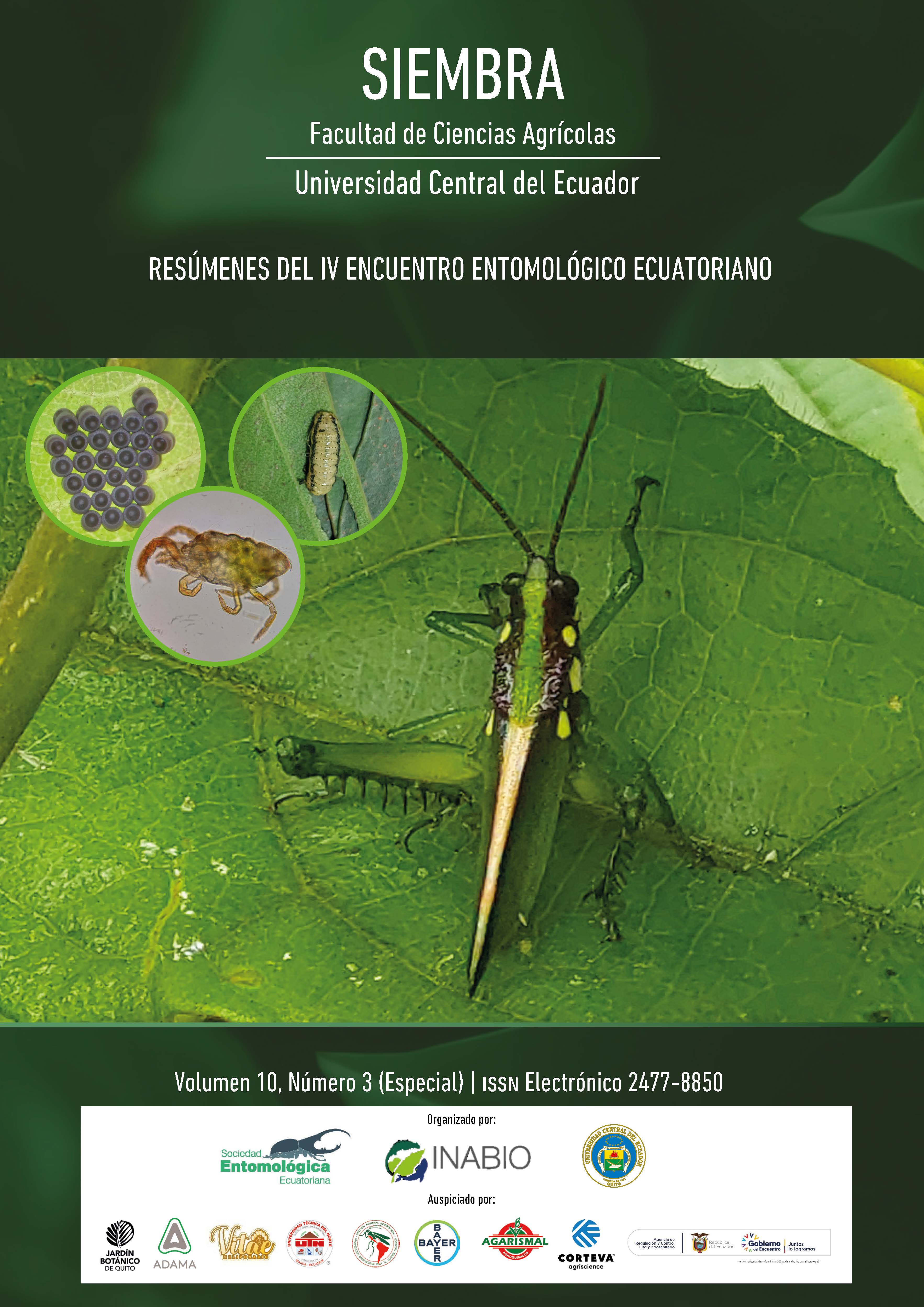ED017. Diversidad de dípteros polinizadores en un gradiente de intensidad de uso del suelo en ecosistemas altoandinos en Ecuador
Contenido principal del artículo
Resumen
En los ecosistemas altoandinos tropicales se ha evidenciado que la biodiversidad de artrópodos nativa se ha visto reemplazada casi por completo por los cambios de uso del suelo, se presume que esta dinámica también puede incluir a los polinizadores. Se conoce que en estos sistemas la mayoría de polinizadores pertenecen al orden Diptera, al contrario que en sitios tropicales donde predominan las abejas. El objetivo de este estudio es determinar cómo la diversidad de dípteros potenciales polinizadores responde a tres tipos de uso del suelo: bosque nativo, bosque en restauración natural y pastizales ganaderos en la provincia de Pichincha, Ecuador. Se registraron datos de riqueza y abundancia, mediante la utilización de platos trampa de colores, 75 por cada tipo de uso de suelo. Se utilizó índices de diversidad para determinar equidad, dominancia y riqueza. Se realizó un análisis de clúster Bray-Curtis para determinar la β-diversidad de la comunidad. Se usó ANOVA de una vía para conocer si existe diferencias significativas en la riqueza y abundancia entre los sistemas muestreados. Se encontraron en total 44 géneros en los tres sistemas: 38 en bosque nativo, 42 en bosque en restauración y 31 en pastizales. Los índices de diversidad indicaron que en el bosque nativo hay una mayor equidad y dominancia, a diferencia del pastizal. A través del análisis de Clúster se determinó que el Bosque nativo y el Bosque en restauración son similares, a diferencia del pastizal. Los resultados de ANOVA constataron que el bosque nativo y el pastizal presentan mayores diferencias, como también el pastizal y bosque en restauración. Esta investigación provee una caracterización de una comunidad de dípteros potenciales polinizadores, destacando su importancia en procesos clave de restauración ecológica, conservación y gestión de la biodiversidad y salud de los ecosistemas.
Descargas
Métricas
Detalles del artículo

Esta obra está bajo una licencia internacional Creative Commons Atribución-NoComercial 4.0.
Los autores que publican en Siembra conocen y aceptan las siguientes condiciones:
- Los autores retienen los derechos de copia (copyright) y ceden a la revista SIEMBRA el derecho de primera publicación del trabajo, bajo licencia Creative Commons Attribution License, que permite a terceros utilizar lo publicado siempre que hagan referencia al autor o autores del trabajo y a su publicación en esta revista.
![]() Esta obra está bajo una Licencia Creative Commons Reconocimiento-NoComercial 4.0 Internacional (CC BY-NC 4.0).
Esta obra está bajo una Licencia Creative Commons Reconocimiento-NoComercial 4.0 Internacional (CC BY-NC 4.0).
- Los autores conservan los derechos de autor y garantizan a la Revista Siembra el derecho de publicar el manuscrito a través de los canales que considere adecuados.
- Los autores pueden establecer por su cuenta acuerdos adicionales para la distribución no exclusiva de la versión de la obra publicada en la Revista Siembra, haciendo reconocimiento de su publicación inicial en la misma, como por ejemplo en repositorios institucionales.
Se autoriza a los autores a difundir sus trabajos electrónicamente una vez sea aceptado el manuscrito para su publicación.

